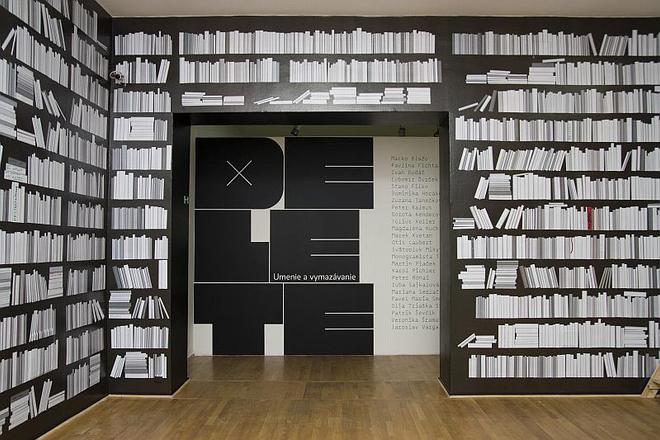THE SLOVAK National Gallery has a tradition of offering conceptual exhibitions based on abstract ideas and connections rather than focusing on a particular artist, style, or place of origin. Its exhibition in this vein for 2012 is called “Delete. Art and Wiping Out” and as its name suggests it is focused on things and notions missing or deleted rather than on those that are physically present.
“In times of pressure, accumulation, stratification and cluttering up of the world not only by things but also by redundant ideas and information a contrary principle emerges subliminally – a need to de-fragment, to “clean” the cultural disk and resist over-production and abnormal information loads in a Zen-like manner,” wrote Petra Hanáková, the curator of the exhibition, in a foreword to the collection. The curator continued that “in the perceptual environment of the present day, increasingly and even more urgently, there appear various strategies of boxing, bracketing, erasing or disconnecting from an indigestible, too-intrusive and stressful reality”.
Opening with a room full of blank books in an impressive library inviting visitors to inscribe their suggestions, the exhibition brings together artists of different generations, concepts and methods of expression. The artworks date from the end of the 1960s and early 1970s to the most contemporary. The concept of deleting that the show presents varies as well, from a quite physical perception of waning bodies and faltering nature, to political acts of omitting unwanted names from forbidden contexts, leading to the most literal, vigorous form of physically erasing an object. In some cases the context of “delete” is very obvious, while other exhibits present it in a more loose and abstract way.
The featured works include various installations, a video, books, excerpts from newspapers, collages, T-shirts with faded colours, photographs and others. The captions describing the works are in Slovak and English, as well as in Braille. The latter is part of a concept titled Binary Code, presented as a symbolic gesture to honour those who cannot see visual artworks at all, having had one of their senses completely “deleted” as gallery lecturer Zuzana Palicová said at one of the accompanying lectures.
The disappearance of parts of “recording media” like photographs, films, and recordings in the exhibition is designed to stress the overload of human memory and its withering ability to retain events, things and notions – implying empty spaces, memory losses, lapses, and blackouts that ask for a gesture of deleting unnecessary information to make enough space for new things to enter.



 Jaroslav Varga - Bez názvu (Untitled). (source: Jaroslav Varga - Bez názvu (Untitled).)
Jaroslav Varga - Bez názvu (Untitled). (source: Jaroslav Varga - Bez názvu (Untitled).)